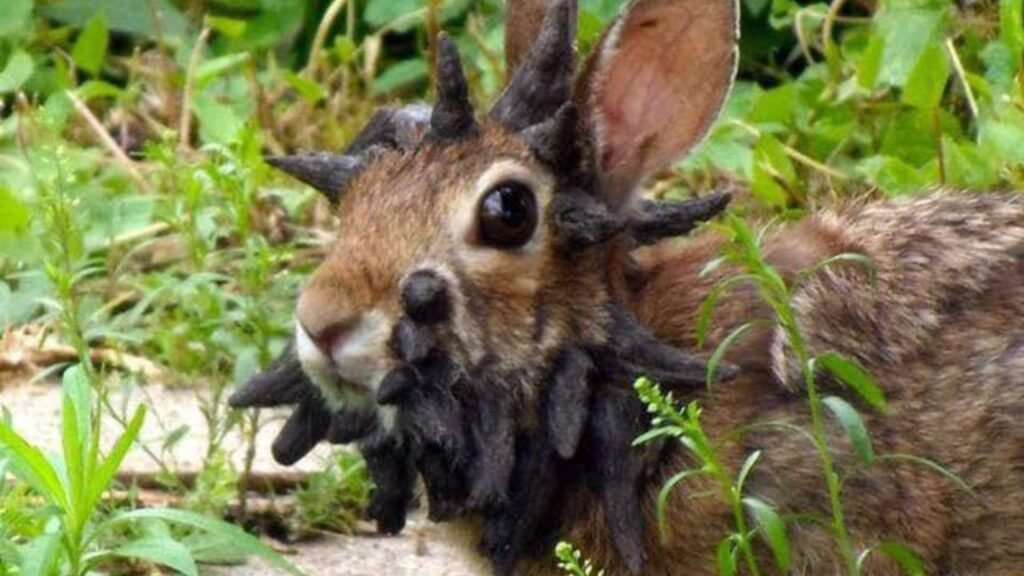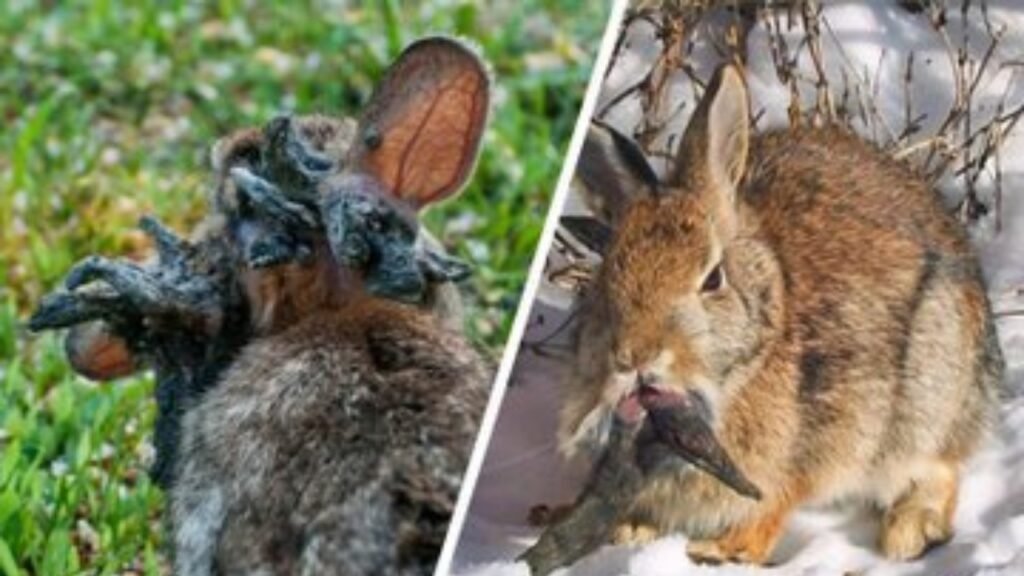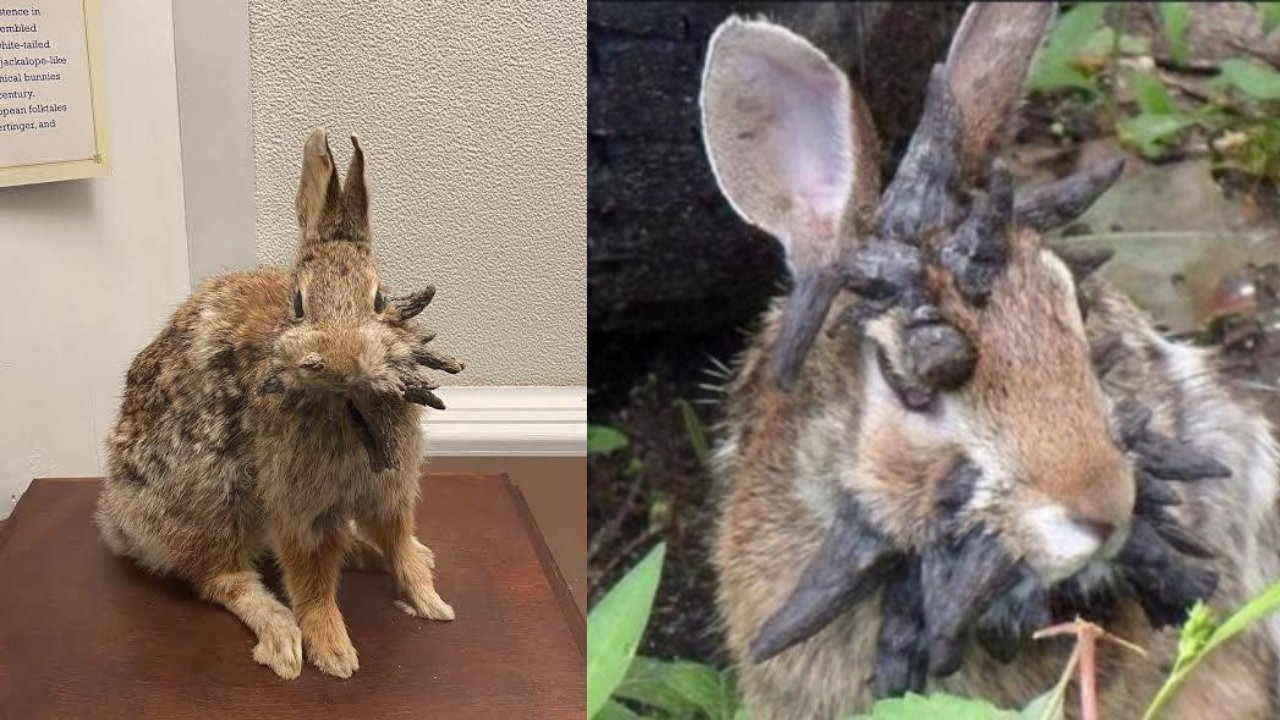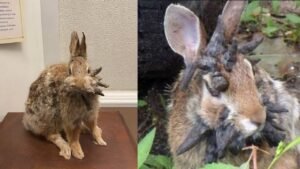Colorado’s “Tentacle Rabbits”: A Viral Phenomenon Explained
In recent weeks, residents of Fort Collins, Colorado, have been startled by sightings of wild cottontail rabbits sporting bizarre, black, horn-like growths on their heads and faces, earning them nicknames like “tentacle rabbits,” “Frankenstein rabbits,” and even “hellbunnies.”
These unsettling protrusions, resembling quills or toothpicks, have sparked widespread curiosity and concern, with images going viral on social media platforms like Reddit and X. Far from a science fiction nightmare, these growths are the result of a naturally occurring virus known as the cottontail rabbit papillomavirus, or Shope papillomavirus (SPV). This article explores the latest updates on this phenomenon, the science behind it, and what it means for Colorado’s wildlife and residents.
What’s Happening in Colorado?
Reports of rabbits with tentacle-like growths first emerged in southeast Fort Collins, with locals describing the growths as “black quills” or “toothpicks” protruding from the animals’ faces. Susan Mansfield, a Fort Collins resident, told 9News, “It looks like it was black quills or black toothpicks sticking out all around his or her mouth. I thought he would die off during the winter, but he didn’t. He came back a second year, and it grew.”
These sightings, documented as early as August 2025, have drawn significant attention due to their alarming appearance, with photos and videos circulating widely online. Colorado Parks and Wildlife (CPW) has confirmed that the growths are caused by the cottontail rabbit papillomavirus, a virus that has been documented since the 1930s but has recently gained renewed attention due to its striking visual impact.
The Science Behind the “Tentacle Rabbits”
The cottontail rabbit papillomavirus, also known as Shope papillomavirus (SPV), is a viral infection specific to rabbits, primarily affecting wild cottontail rabbits in regions like the Midwest, though outbreaks in domestic rabbits are possible. The virus is transmitted through biting insects such as ticks, fleas, and mosquitoes, which explains why sightings peak during warmer months like summer and fall.
Once infected, rabbits develop black, wart-like nodules, typically on their heads, which can elongate into horn- or tentacle-like shapes. According to CPW spokesperson Kara Van Hoose, these growths are essentially benign tumors, often described as warts, and do not typically harm wild rabbits unless they interfere with eating, drinking, or vision.
The virus is not transmissible to humans or non-rabbit pets, such as dogs or cats, alleviating concerns about public health risks. However, domestic rabbits are at risk of more severe infections and should be monitored closely if exposed. CPW advises pet owners to keep their animals away from wild rabbits to prevent potential transmission and recommends veterinary care for any domestic rabbits showing signs of the virus, such as black nodules or horn-like growths.

Recent Updates and Public Response
As of August 13, 2025, CPW has noted an uptick in reports of infected rabbits, likely amplified by media coverage and social media buzz. Outlets like USA Today, Fox Weather, and E! Online have covered the story, emphasizing that while the rabbits’ appearance is alarming, the virus poses no significant threat to the animals or the public. The growths typically resolve on their own as the rabbits’ immune systems clear the virus, particularly in cooler months. CPW only recommends euthanizing infected rabbits if the growths severely impair their ability to eat or drink, which is rare.
Social media has played a significant role in spreading awareness, with posts on X describing the rabbits as “nightmare bunnies” and comparing their appearance to mythical jackalopes or horror movie creatures. One X post from August 13, 2025, by user @ssmb291_ included a breakdown of SPV, further fueling public fascination. Despite the sensational descriptions, wildlife officials urge residents to follow standard wildlife safety protocols: avoid handling infected rabbits, keep pets on leashes, and report sightings to CPW to help track the virus’s spread.

Implications for Colorado’s Wildlife
The cottontail rabbit papillomavirus is not a new phenomenon, but its recent visibility highlights the complex interplay between wildlife, disease, and human perception. CPW notes that the virus is relatively common and part of the natural ecosystem, with no need for widespread intervention. However, the agency uses public reports to monitor the virus’s prevalence, which can inform wildlife management strategies. The virus’s spread via insects also underscores the role of environmental factors, such as seasonal insect activity, in wildlife health.
Interestingly, papillomaviruses are not unique to rabbits. Other animals, like deer, can contract species-specific strains, and CPW recently confirmed a case of avian pox in a domestic chicken in south Denver, indicating that similar viral infections can affect various species. These cases serve as a reminder of the importance of maintaining distance from wild animals to prevent stress or disease transmission.
Conclusion
The “tentacle rabbits” of Fort Collins may look like creatures from a horror story, but they are simply wild cottontails grappling with a well-documented virus. The cottontail rabbit papillomavirus, while visually striking, poses minimal risk to the rabbits themselves and no danger to humans or other pets. As Colorado residents continue to share their sightings, CPW encourages the public to stay informed, avoid interacting with infected animals, and report observations to aid in monitoring. This viral phenomenon, both in the biological and social media sense, serves as a fascinating case study in how nature’s quirks can capture our imagination and spark conversations about wildlife health.














Post Comment